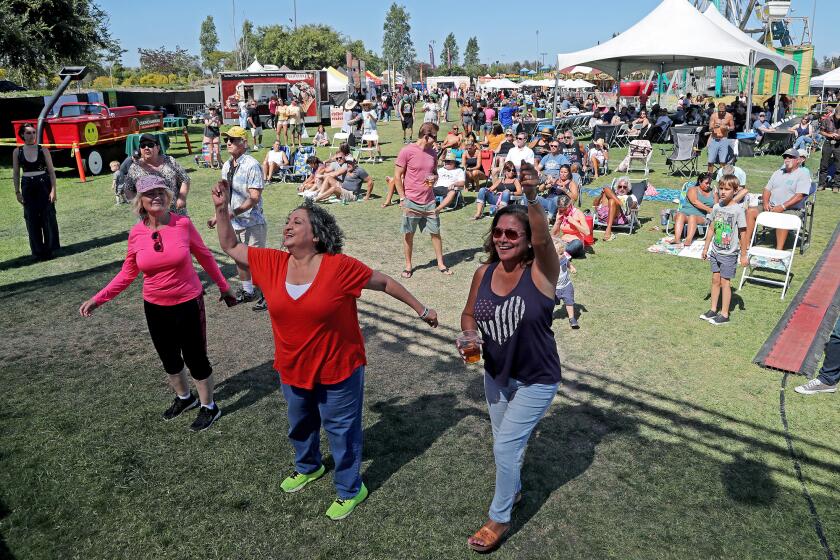A look at ugly side of tort law
- Share via
This is in response to the “Business Spotlight” on June 27: “Newport
law firm holding court.”
The story shows and tells about two well-dressed trial lawyers
smiling about their new offices that resemble a basketball court --
and gloating over their hefty paychecks.
Let’s state from the start that there are some legitimate
personal-injury cases, in which the plaintiffs deserve to be
well-compensated and the lawyers deserve reasonable fees.
However, the glare of the “spotlight” does not mention the other,
negative side of uncontrolled and frivolous litigation.
Unfortunately, where we live -- Newport Beach, Costa Mesa, Orange
County and California -- is among the most litigious locales in the
nation.
You may have recently read about Ralph Nader’s ongoing plans for
an American Museum of Tort Law in his home state of Connecticut. If
this becomes reality, he owes it to the American people to show the
ugly side of tort law, the one that is abused and manipulated by
those lawyers who have done much less than a “socially redeeming”
job.
Whether Nader would be willing to devote the time and resources to
such an enormous undertaking as this -- the repulsive side of civil
justice -- is doubtful.
Here are a few humble suggestions on how the American Museum of
Tort Law should showcase the reckless abuse, gamesmanship and
degradation of our legal system by some of these social redeemers:
First, how about a Frivolous Lawsuit Room. Wallpapered in dollar
bills representing taxpayers’ money wasted on lawsuit abuse each
year, this room will be dedicated to every lawyer and litigant who
has laughed all the way to the bank. The main exhibit, encased in
plastic, would be the veritable holy grail of civil justice, the
McDonald’s cup that held the coffee Stella Liebeck spilled on herself
as she left the drive-through. She sued the company and won an
initial award of $2.7 million.
On another pedestal, let’s place the jar of chunky peanut butter a
prison inmate sued California over because he wanted the smooth
variety instead.
And, among many, many others, we should be sure to include the
six-pack of beer a woman sued her supermarket over because she
dropped it on her foot, winning more than $400,000.
The highlight of the Frivolous Lawsuit Room, though, will be a
huge digital counter that continuously tells visitors how much the
legal system has cost them so far that year. As a baseline, the
American Tort Reform Assn. estimates this cost to be $1,200 per
person, per year, for a total annual cost of $152 billion.
Surrounding the display would be such threats to humanity as a
stepladder and a football helmet, of which 20% to 50% of the cost
goes strictly to cover liability.
The next room would be the Junk Science Room. On the walls, we can
display images of all the dubious “experts” on whom personal-injury
lawyers have relied over the years to manipulate judges and juries.
The centerpiece of the room will be a statue of Tara Ransom, a young
child who relies on a brain shunt, made of silicone, to keep her
alive. Her statue would be a reminder that even though real science
has shown no link between silicone breast implants and disease, junk
science has all but driven silicone from the market, limiting Tara’s
access to the only device available to keep her alive.
Elsewhere in the room would be shrines to products like silicone
heart valves, pacemakers and vaccines that are too expensive because
of avaricious lawsuits. And finally, the room will contain a large,
clear plastic empty box, to symbolize all the life-saving products
that will never be available because of the risk of lawsuits.
The final room would be the Class Action Room. At the entrance, a
sign would read: “Class-action suits were intended to help victims.”
As visitors walk inside, they would see case summaries of famous
class actions, and a breakdown of what the victims received and what
the lawyers received. One example is the recently settled
class-action lawsuit over the size of a computer monitor screen,
where each class member received a $13 rebate toward the purchase of
$250 in new computer equipment, while the attorneys filing the suit
negotiated $5.8 million in legal fees.
Another example would be a class action against the makers of a
popular breakfast cereal over a food additive with no evidence of any
injury to consumers. The lawyers who sued the company received fees
of almost $2,000 per hour, for a total of nearly $2 million.
Consumers received coupons for a free box of cereal.
Quarterly, this writer receives a check for one penny from a
class-action suit he barely knew he was part of. The lawyers made
over $50 million. The check is un-cashable!
In conjunction with this room, we should run a side contest, in
which visitors can attempt to find the socially redeeming work in
these cases.
Nader claims his 7,000-square-foot American Museum of Tort Law
will be “a major slice of American history.” Indeed, lawsuit abuse
has, unfortunately, become very much a part of our American
legislative, executive and judicial heritage.
Let’s pray that no public funds will be used to build the museum.
The public has already given more than its fair share. In fact, after
everything Americans pay to support lawsuit abuse, the museum
admission should at least be free.
* EDITOR’S NOTE: Michael Arnold Glueck is a Newport Beach
resident.
All the latest on Orange County from Orange County.
Get our free TimesOC newsletter.
You may occasionally receive promotional content from the Daily Pilot.









